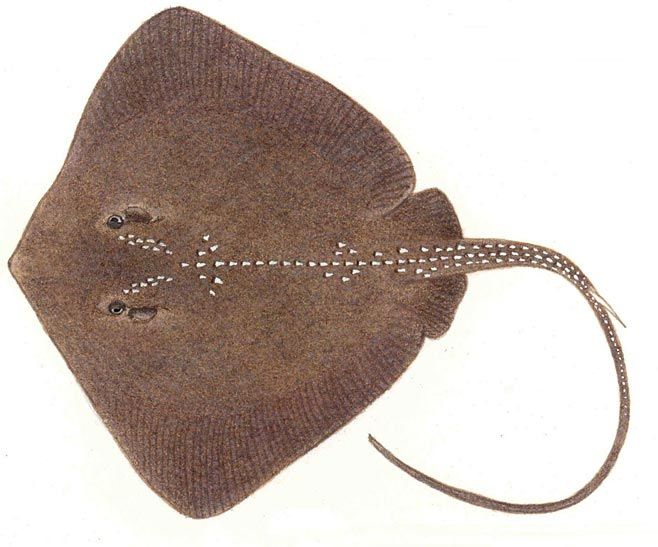|
Dasyatis thetidis (Thorntail stingray)
Ogilby, in Waite, 1899
Life
> Eukaryotes >
Opisthokonta
> Metazoa (animals) >
Bilateria >
Deuterostomia > Chordata >
Craniata > Vertebrata (vertebrates) > Gnathostomata (jawed
vertebrates) > Chondrichthyes > Elasmobranchii > Batoidei >
Myliobatoidei >
Dasyatidae
 |
|
Dasyatis thetidis (Thorntail stingray) [Illustration
by Ann Hecht ©] |
Identification
A huge plain dark stingray with a broadly
angular snout and pectoral disk, thick-based tail tapering to a
slender whip much longer than body length, no upper caudal finfold
but a long lower caudal finfold that ends far in front of tail tip,
and upper disk and tail roughened by large flat thorns in large
juveniles and adults (absent in small individuals); 1 or 2 stings on
tail.
COLOUR:
Blackish, dark green or dark brown above, white below
without markings.
Size
To 4 m TL and 2 m DW.
Range
East coast,
from Cape Agulhas to central Mozambique; New Zealand and southern
Australia.
Habitat
Lives on soft bottom from inshore to at least
382 m, common on offshore banks as well as close inshore.
Biology
Little known.
Eats crabs, mantis shrimps, bivalves, polychaetes and
conger eels.
Human Impact
Caught by trawlers and sought as a game
fish by shore and ski-boat anglers.
Text by Leonard J.V. Compagno, David A. Ebert
and Malcolm J. Smale
|
